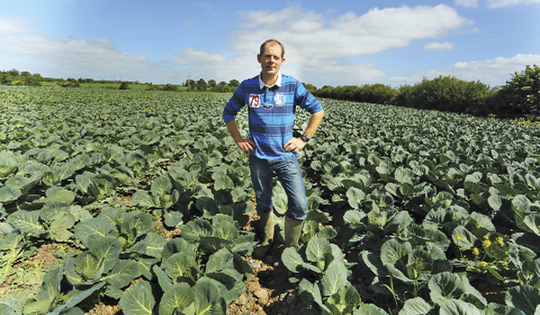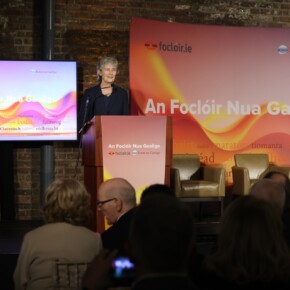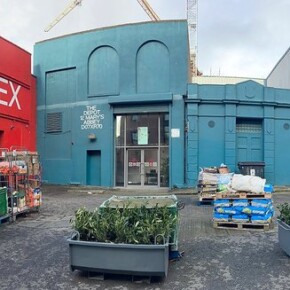Move to allay sewage plant concerns
Dublin People 21 Jun 2013
A NORTHSIDE man has told of his devastation after the announcement that a massive sewage plant is to be built close to his home and family business.
However, Greater Dublin Drainage Project, who are tasked with delivering the plant, have moved to allay his concerns.
Approximately 34 acres of a 120-acre farm owned by PJ Jones is to be used for the controversial plant after a site in Clonshaugh was chosen.
The Jones family has been running the farm – located in Cloghran – as a business for more than 50 years. They now face the daunting prospect of losing the business they’ve put most of their lives into.
Joe Jones, a member of the Reclaim Fingal Alliance action group, has vowed to fight the decision to the bitter end.
“We’re absolutely devastated and this is causing huge stress to the family,
? he told Northside People.
“We will be the closest residents to the plant – around 200 metres from it.
“Make no mistake about it, this is on a massive scale. It will be four to five times the size of Croke Park, and that’s not just the pitch, it’s the whole of Croke Park.
“They (Greater Dublin Drainage Project) are proposing to run a pipeline through two fields east of the farm and another one right across the farm. These pipelines will destroy the ground.
“It just beggars belief that Fingal County Council can come in and bulldoze over the land we’ve been farming all these years.
?
Mr Jones, who only built a new home on the land in 2007 after receiving planning permission from the council, said the decision would have a huge negative impact on the business.
“It’s getting tougher to make a living,
? he stated.
“We have to keep working harder and harder. My own father, PJ, is 76-years-of-age and he’s still working 12 to14 hour days. That will give you an indication of how tough it is.
?
Mr Jones provides vegetables to the major supermarkets and is concerned that they won’t want to purchase produce grown on the doorstep of a giant sewage plant.
“The supermarkets we supply are very tough to deal with,
? he stated.
“This is a huge setback for us. We’ve had offers over the years from property developers for the land but we’ve always turned them away because we wanted remain here and earn a living.
?
Mr Jones, and all those opposed to the plan, believe smaller localised plants would be much more suitable for dealing with the treatment of sewage.
“The big is question: what happens if this massive plant breaks down?
? he asked.
As locals continue to digest the news, Mr Jones said he would be involved in organising information days and a protest outside Fingal County Council’s headquarters in Swords.
“Our aim will be to get as many people as possible involved in the campaign,
? he added.
“We’ll also look at the Environmental Impact Statement (EIS) and see if we can spot any flaws in that, which would help our cause.
“And of course, we’ll be appealing to An Bord Pleanala who will have the final say on whether the plant can go ahead.
“
A spokeswoman for the Greater Dublin Drainage Project said the site for the plant would be 800 metres from the residential areas of Belcamp and Darndale.
“It has a total area of approximately 56 acres which includes landscaping and screening and the heights of buildings will vary across the site,
? she told Northside People.
“Croke Park covers an area of 16 acres (according to its website) which is just over a third of the area of the site for the proposed plant.
“The Project Team will undertake and prepare an Environmental Impact Statement (EIS) and Natura Impact Statement (NIS) for the preferred site option, which will be submitted as part of the planning approval documentation to An Bord Pleanála.
“The EIS will assess both the potential construction and operational impacts of all aspects of the project on the environment, including pipelines and will schedule mitigation measures to limit any impacts.
“Construction of the pipelines will comply with mitigation measures for reinstating lands following construction.
?
The spokeswoman said the waste water treatment plant (WWTP) would be constructed and operated in accordance with current legislation and best practice, and will have
“no negative impact on the local environment
?.
“An EIS will be prepared for the project which will assess the potential impacts on the surrounding environment and schedule any necessary mitigation measures,
? she explained.
“In addition to complying with the measures in the EIS, the WWTP will be required to obtain and comply with a discharge license monitored by the EPA.
“A Natura Impact Statement (NIS) is also being carried out in parallel to the EIS.
?
When asked what would happen if there was an accident or malfunction at the plant, the spokeswoman said:
“The treatment plant will be designed, built and operated to the highest technological standards and this will include a rigorous maintenance regime.
“The proposed plant will have built-in maintenance capacity, which can be utilised should any malfunction occur at the plant.
“In addition, storm tanks will be located on the site and within the system in the upstream catchments for storage during times of significant storms or should any incident occur.
“In addition, a plant the size we are proposing would have a back-up power generator in place in case of power failure. A regional plant will be the most reliable solution.
?
When asked why smaller, localised plants could not have been used as an alternative, the spokeswoman added:
“Development of a single plant compared to numerous small plants is the preferred option from an environmental, technical and economic perspective.
?











